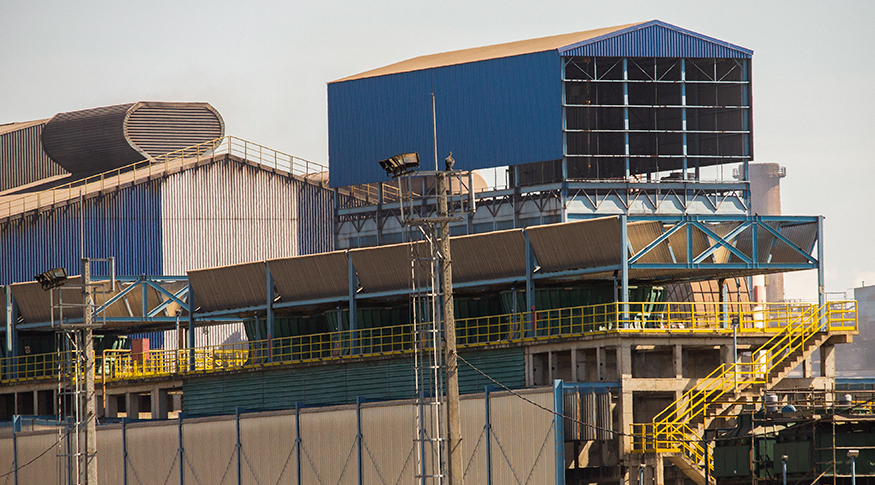National industry
Industrial output changes -0.1% in November
January 05, 2023 09h00 AM | Last Updated: January 05, 2023 12h53 PM

After advancing 0.3% in the previous month, the industrial output changed -0.1% between October and November. With these results, this sector is still 2.2% below the pre-pandemic level (February 2020) and 18.5% below the record level of May 2011. It grew 0.9% compared with November 2021. Industry presents a cumulative decrease of 0.6% in the year and of 1.0% in 12 months. The data come from the Monthly Survey of Industry (PIM), released today (5) by the IBGE.
“There were four negative figures over the last six months, out of five we had until now in 2022. It shows the sector spinning around the same level, though with a negative bias, since the quarterly moving average is dropping for the fourth consecutive month, showing a very clear downward trend,” explains André Macedo, the manager of the survey. After retreating in October (-0.4%), September (-0.3%) and August (-0.2%), the quarterly moving average stayed at -0.2% in November.
Macedo explains that the measures to increase income and leverage the sector implemented by the government in the beginning of 2022 caused a gain in the pace of industry, which registered four consecutive months of growth from February onwards. “Nevertheless, recovery was punctual. Later, high inflation, especially that of food, high number of workers out of the labor market, precarious jobs and a steady wage bill caused the industrial sector to lose pace,” analyzes him.
The researcher highlights that, unlike previous months, activities prevailed on the positive side in November - 15 out of 26 -, in spite of the overall indicator being on the negative side.
Among the activities, the major negative influences on the month´s figure, over the previous month, came from mining and quarrying industries (-1.5%) and computer equipment, electronic and optical products (-6.5%). After rising for two months, the mining sector returns to the negative side, pressed by the area of petroleum. After growing for two consecutive months, computer, electronic and optical products dropped for the second month in a row.
“That loss is related to the production of brown goods, especially TVs. The increases in August (6.5%) and September (0.9%) might be related to the World Cup, and now it would be showing an offset movement. However, the economy loses pace, with high default rates, rising interest rates and, notwithstanding their association with income, durable consumer goods have a direct relation with the evolution of credit as well. These factors inhibit the consumption in the bottom line and, consequently, they affect the output,” analyzes the manager.
Other negative contributions came from the sectors of textiles (-5.4%), manufacture of wearing apparel and accessories (-3.8%), fabricated metal products (-1.5%) and non-metallic mineral products (-1.2%).
Among the 15 activities that expanded the output, food products (3.2%), motor vehicles, trailers and bodies (4.4%), beverages (10.3%) and coke, petroleum products and biofuels (2.8%) were the major influences.
“After dropping for two months, the sector of food products registered the second month of growth in a row. This month, the advance is related to the bigger production of sugarcane, being sugar the item that leveraged this advance,” explains Macedo.
The sector of vehicles offset the losses of the two previous months. According to Macedo, “there was a cumulative drop of -6.8% in September and October and now it advances 4.4% as a compensation factor. The sector of car pieces was the major highlight.”
The two-digit growth in the sector of beverages might be related to the end of the year, explained the manager, since the two major groups within the sector, alcoholic and non-alcoholic beverages, grew. However, Macedo stresses that that activity recorded significant losses in the two previous months.
Petroleum products and biofuels grew for the second consecutive month and stepped up the growth last month. “This result included some growth of petroleum products, yet much of the advance comes from the sugarcane harvest, with alcohol leveraging this activity,” highlights Macedo.
With a low comparison basis, industry grows 0.9% over November 2021
Compared with the same period of 2021, the industrial sector grew 0.9% in November 2022, the fourth consecutive month of growth. Four out of four major economic categories reported positive figures, as well as 12 out of 26 sectors.
Among the activities, the main positive influences on the industry overall came from food products (8.6%) and motor vehicles, trailers and bodies (13.1%). Among the 14 activities that registered a reduction, manufacture of wearing apparel and accessories (-15.5%), wood products (-25.1%) and mining and quarrying industries (-2.9%) exerted the major influences.
“Industry grew 0.9% in November 2022, though the comparison basis is a loss of 4.4% in November 2021. So, the growth is associated with a low basis. We also remind that the last months of 2021 were marked by logistics issues and difficulties in the supply chains, lack of raw material and electronic components, affecting the production. That low basis justifies a lot the sequence of four months of growth,” assesses Macedo.
More on the survey
PIM Brazil has been producing short-term indicators since the 1970s regarding the behavior of the real product of mining and quarrying and manufacturing industries. From May 2014, the release of a new series of monthly industrial production indices began, after a reformulation to: update the sample of activities, products and respondents; prepare a new weighting structure for the indices based on the most recent industrial statistics, in order to harmonize with the needs of the implementation the National Accounts Series - reference 2010; and to adopt the new classification of activities and products used by other industry surveys from 2007 onwards, namely: the National Classification of Economic Activities - CNAE 2.0 and the List of Industrial Products - PRODLIST-Industry.
The survey results can also be consulted at the Sidra database.




















